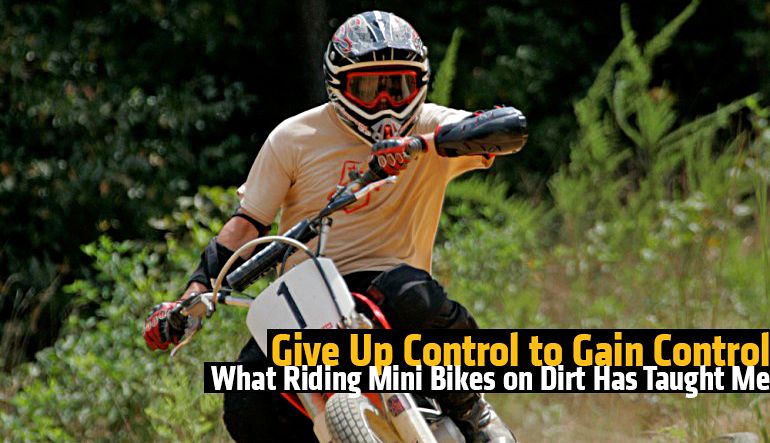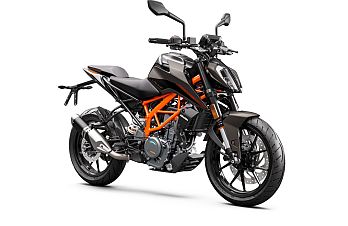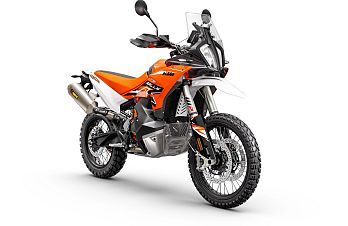I've told this story before, but I'll tell it again. When I first got into riding, I was on an unpaved gravel road and grabbed too much front brake. The bike was instantly unhappy and I fell over. I was only going 5mph, but the experience was fairly mortifying as it happened at a biker gathering. Everyone saw me. Besides my pride being seriously sprained, I also developed a fear of gravel.
I hated being afraid. I hated feeling as if in the right moment, I might lose control of my bike ... as if maybe my bike was conspiring against me. As a person who liked to tour motorcycles, this was not a great attitude to have. When you ride on the street, you need to be ready for anything. It might rain. It might snow. You might be having the time of your life in some great curvy roads, when all of sudden there's a rough patch of gravel in the apex of a turn and you lose the rear. What does it mean when the motorcycle loses control in these situations? The hard truth is that it is not the bike’s fault, but our lack of understanding that causes these moments.
Former racer turned instructor Aaron Stevenson sums it up best by saying, “riders are going to test their limits without understanding what the bike, themselves, and the traction is capable of it.”
I wrote about Aaron earlier this summer when I rode to his school, Cornerspin, in Salisbury, NC. Cornerspin is a mini bike dirt school that boasts teaching "road racing in the dirt." Aaron also teaches a track school called Cornerspeed, yet he emphasizes going to the dirt school first. He gave me some input when I was trying to write this article to convince you that you need to go to a mini bike dirt school asap.
So back to the original question, how do we learn about our limits that without hurting ourselves or our bikes?
This year, I found the answer.
Why Mini Bikes?
You can't go all that fast: Most of us have probably spooked ourselves when something unexpected happened and we were going too fast to deal with it. On a mini bike, you can't go that fast. Most mini bike schools use bikes that are 100-175ccs, so you'd be lucky to top out at 45mph. In fact, it's unlikely you'll even go beyond 3rd gear. This gives you time to actually think about what you're doing and learn how to make corrections. It'll also help to reduce the fear of crashing.
They don't have much power: When you have an awesome powerful bike equipped with traction control, ABS, and the like, you may not realize that you have bad habits. With an under-powered mini bike, you only have raw skill to go on. If your rear end slides out, then you're forced to learn how to deal with it, no electronics killing your power. You're also forced to understand what the limits of braking capabilities are. There are no excuses you can make, so it's like having a blank slate to start on.
They're super light: The entire point of a mini bike school is learning to push a motorcycle to its limit. Naturally if you're trying to push a bike to the limit, you're going to go over the limit and crash. Crashing a light and slow bike means that you're less likely to seriously hurt yourself (though it can happen). If you crash, you can easily pick up the bike and try the exercise again.
You can simulate extreme situations with them: A mini bike with modified tires on the dirt means that you will not have great traction. As Aaron says, "We want the bike to freely and quickly slide around at low speeds so people can know what the limit feels like." If you're afraid of losing the rear end, then this is a great way to consistently simulate that feeling without going too fast and hurting yourself. You can actually practice the responses you need to deal with these situations.
They aren't yours! It's easier to push a motorcycle to the limit when it's not yours. Crash it for the weekend, then give it back to the school to deal with. A good school will include typical knicks and dings (and levers) in the cost of a rental.
What Can Dirt Riding Teach a Street Rider?
The traction component of mini bike dirt schools is what sets this type of training apart. Traction control is the first thing you'll learn… and no, I don't mean how to turn on/off a button on the dash.
Knowing how to control the traction on your motorcycle is a lifesaving skill. “At some point, you are going to break traction. You're going to find the bike sideways, and you're going to find yourself out of control. There's a freedom with the motorcycle where you can learn what to do in those moments.
"We have an expression: You give up control to gain control. If you have a set of motor skills and some responses that you've practiced that can be the difference between throwing your $20K bike (or your $5K bike, whatever it is) down on the ground or being able to ride it out,” Aaron told me. “No matter what you are riding on, you always have 100% available traction.
The difference is high friction or low friction. So whether you are riding on ice, in the rain, or unexpectedly hit antifreeze or whatever might be out on the open road, understanding the dynamics, how the chassis really works and having some muscle memory prepares you for the unexpected. Riding in the dirt allows you to go beyond the limit at a much lower speed with lesser consequences."











24
Comment